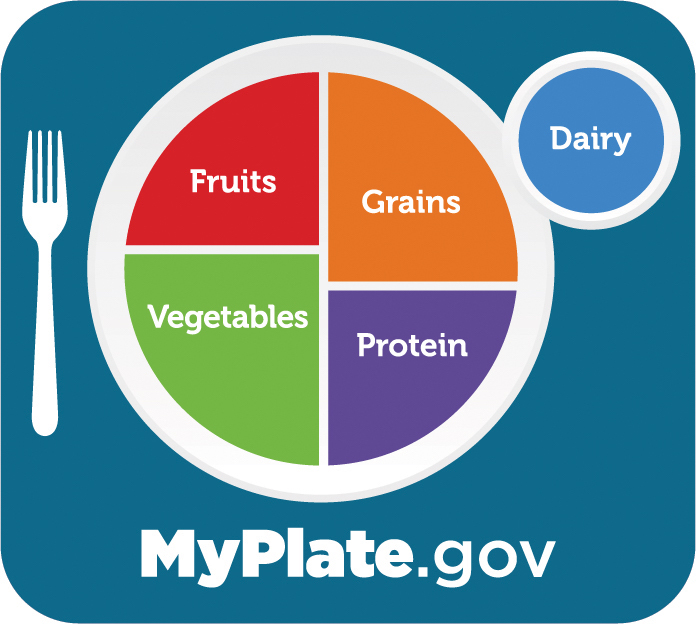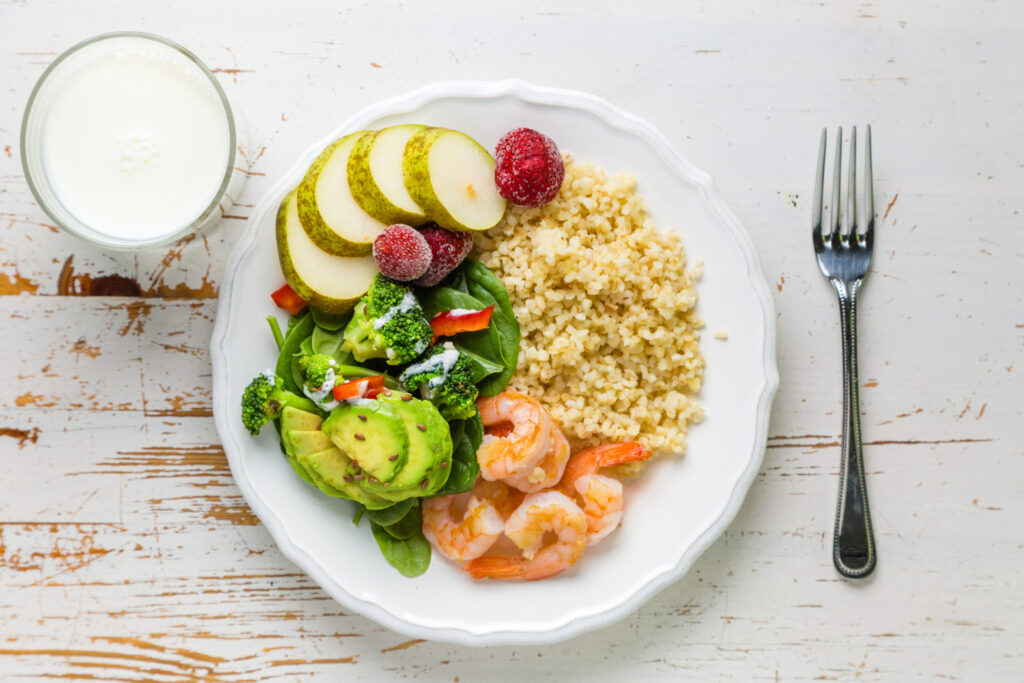A balanced diet includes adequate hydration and the consumption of a variety of three macronutrients and two micronutrients each day. Macronutrients consist of carbohydrates, protein, and fats, while micronutrients include vitamins & minerals. With each day, we want to strive to have 3-5 small meals containing each of those five essential elements. Each of those meals, should strive to include a grain, a protein, dairy, fruit, and vegetable in order to consume adequate amounts of all five components.
So how does that translate to common food groups we consume in a day? According to the USDA, we should aim to have 6 -11 servings of whole grains, breads, and pasta per day. Two – 4 servings of whole fruit and 3-5 servings of fresh vegetables per day and 2 – 3 servings of proteins and dairy each day. At the top of the pyramid, are sweets, oils, butters, salad dressing, etc. We want to keep these fairly minimal and the nutrient dense choices close to 100% of your total calories needed for the day. Nutrient dense foods include fresh fruits, veggies, whole grains, non-fat or low fat dairy, fish, seafood, lean meats, nuts, legumes, and skinless poultry. These foods are also loaded in vitamins and minerals. Lastly, notice the water intake in the top left of the pyramid. Water is so important as it is used for skin health, delivering oxygen, energy, neural activity, etc. Women should drink about six 16.9 fluid ounce water bottles a day and about eight bottles for men! Water is also an effective weight loss tool as in aids in filling up our stomach so that there is less room to fill it with food.

To help apply this information to each meal, we want to picture the MyPlate image below. Aim to fill about half your plate with fruits and veggies, a quarter with grains and a quarter with protein. Add a glass of milk on the side for calcium rich dairy. Finally, we want to think in terms of colors! The more colors you see on your plate, the more vitamins and minerals you are including. See the image to the right as an example. Hope you have a colorful day!


Did you know that approximately 1,200 out of the 2,000 calories are needed just to keep the brain and organs alone functioning each day? This is called the basal metabolic rate. Therefore, it is crucial to avoid excessively restricting oneself to a mere 500 calories a day in weight loss attempts. When the body is faced with such a severe caloric deprivation, our bodies instinctively store the calories we do put into our body as fat, acting as a survival mechanism to safeguard us in case the next meal is significantly delayed. Isn’t that amazing how the body works?

